 W
WThe Abdominizer was an abdominal exerciser invented in 1984 by Canadian chiropractor Dennis Colonello and marketed through infomercials by the Fitness Quest corporation of Canton, Ohio, selling around six million.
 W
WAn airboat is a flat-bottomed watercraft propelled by an aircraft-type propeller and powered by either an aircraft or automotive engine. They are commonly used for fishing, bowfishing, hunting, and ecotourism.
 W
WAn alkaline battery is a type of primary battery which derives its energy from the reaction between zinc metal and manganese dioxide.
 W
WAn alpha particle X-ray spectrometer (APXS) is a spectrometer that analyses the chemical element composition of a sample from the scattered alpha particles, and fluorescent X-rays after the sample is irradiated with alpha particles and X-rays from radioactive sources. This method of analysing the elemental composition of a sample is most often used on space missions, which require low weight, small size, and minimal power consumption. Other methods are faster, and do not require the use of radioactive materials, but require larger equipment with less modest power requirements. A variation is the alpha proton X-ray spectrometer, such as on the Pathfinder mission, which also detects protons.
 W
WAn anti-roll bar is a part of many automobile suspensions that helps reduce the body roll of a vehicle during fast cornering or over road irregularities. It connects opposite (left/right) wheels together through short lever arms linked by a torsion spring. A sway bar increases the suspension's roll stiffness—its resistance to roll in turns—independent of its spring rate in the vertical direction. The first stabilizer bar patent was awarded to Canadian inventor Stephen Coleman of Fredericton, New Brunswick on April 22, 1919.
 W
WBag tags, also known as baggage tags, baggage checks or luggage tickets, have traditionally been used by bus, train, and airline carriers to route checked luggage to its final destination. The passenger stub is typically handed to the passenger or attached to the ticket envelope:
 W
WA helicopter hauldown and rapid securing device (HHRSD) or beartrap enables helicopters to land on and depart from smaller ships in a wide range of weather conditions.
 W
WA bin bag, rubbish bag, garbage bag, bin liner, trash bag or refuse sack is a disposable bag used to contain solid waste. Such bags are useful to line the insides of waste containers to prevent the insides of the receptacle from becoming coated in waste material. Most bags these days are made out of plastic, and are typically black in color.
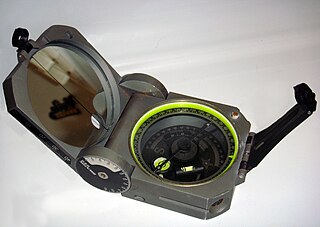 W
WA Brunton compass, properly known as the Brunton Pocket Transit, is a precision compass made by Brunton, Inc. of Riverton, Wyoming. The instrument was patented in 1894 by a Canadian-born geologist named David W. Brunton. Unlike most modern compasses, the Brunton Pocket Transit utilizes magnetic induction damping rather than fluid to damp needle oscillation. Although Brunton, Inc. makes many other types of magnetic compasses, the Brunton Pocket Transit is a specialized instrument used widely by those needing to make accurate navigational and slope-angle measurements in the field. Users are primarily geologists, but archaeologists, environmental engineers, mining engineers and surveyors also make use of the Brunton's capabilities. The United States Army has adopted the Pocket Transit as the M2 Compass for use by crew-served artillery.
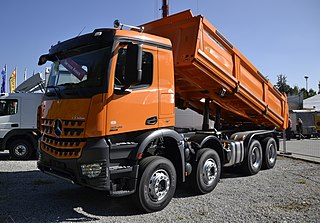 W
WA dump truck, known also as a dumper truck or tipper truck, is used for taking dumps for construction as well as coal. A typical dump truck is equipped with an open-box bed, which is hinged at the rear and equipped with hydraulic rams to lift the front, allowing the material in the bed to be deposited ("dumped") on the ground behind the truck at the site of delivery. In the UK, Australia and India the term applies to off-road construction plant only, and the road vehicle is known as a tipper lorry, tip-truck, tip-trailer, tipper truck, or tipper.
 W
WA foghorn or fog signal is a device that uses sound to warn vehicles of navigational hazards like rocky coastlines, or boats of the presence of other vessels, in foggy conditions. The term is most often used in relation to marine transport. When visual navigation aids such as lighthouses are obscured, foghorns provide an audible warning of rock outcrops, shoals, headlands, or other dangers to shipping.
 W
WThe Froebe Helicopter was the first helicopter to be built and flown in Canada. It was built by brothers Doug, Theodore and Nicholas Froebe in the 1930s.
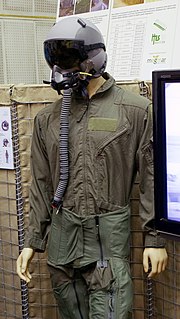 W
WA G-suit, or anti-g suit, is a flight suit worn by aviators and astronauts who are subject to high levels of acceleration force (g). It is designed to prevent a black-out and g-LOC caused by the blood pooling in the lower part of the body when under acceleration, thus depriving the brain of blood. Black-out and g-LOC have caused a number of fatal aircraft accidents.
 W
WA goaltender mask, commonly referred to as a hockey mask or a goalie mask, is a mask worn by ice hockey, inline hockey, field hockey, bandy and floorball goaltenders to protect the head from injury. Jacques Plante was the first goaltender to create and use a practical mask in 1959. Plante's mask was a piece of fiberglass that was contoured to his face. This mask later evolved into a helmet-cage combination, and single piece full fiberglass mask. Today, the full fiberglass mask with the birdcage facial protector is the more popular option, because it is safer and offers better visibility.
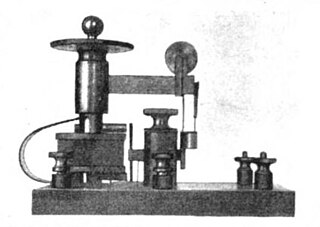 W
WThe hot-wire barretter was a demodulating detector, invented in 1902 by Reginald Fessenden, that found limited use in early radio receivers. In effect, it was a highly sensitive thermoresistor, which could demodulate amplitude-modulated signals, something that the coherer could not do.
 W
WA hydraulophone is a tonal acoustic musical instrument played by direct physical contact with water where sound is generated or affected hydraulically. The hydraulophone was described and named by Steve Mann in 2005, and patented in 2011. Typically, sound is produced by the same hydraulic fluid in contact with the player's fingers. It has been used as a sensory exploration device for low-vision individuals.
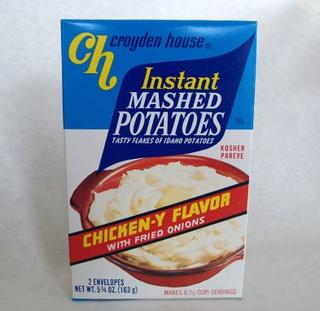 W
WInstant mashed potatoes are potatoes that have been through an industrial process of cooking, mashing and dehydrating to yield a packaged convenience food that can be reconstituted by adding hot water or milk, producing an approximation of mashed potatoes. They are available in many different flavors.
 W
WInterband cascade lasers (ICLs) are a type of laser diode that can produce coherent radiation over a large part of the mid-infrared region of the electromagnetic spectrum. They are fabricated from epitaxially-grown semiconductor heterostructures composed of layers of indium arsenide (InAs), gallium antimonide (GaSb), aluminum antimonide (AlSb), and related alloys. These lasers are similar to quantum cascade lasers (QCLs) in several ways. Like QCLs, ICLs employ the concept of bandstructure engineering to achieve an optimized laser design and reuse injected electrons to emit multiple photons. However, in ICLs, photons are generated with interband transitions, rather than the intersubband transitions used in QCLs. Consequently, the rate at which the carriers injected into the upper laser subband thermally relax to the lower subband is determined by interband Auger, radiative, and Shockley-Read carrier recombination. These processes typically occur on a much slower time scale than the longitudinal optical phonon interactions that mediates the intersubband relaxation of injected electrons in mid-IR QCLs. The use of interband transitions allows laser action in ICLs to be achieved at lower electrical input powers than is possible with QCLs.
 W
WLithium batteries are primary batteries that have metallic lithium as an anode. These types of batteries are also referred to as lithium-metal batteries.
 W
WMarsh Pegs is a goal anchoring system for ice hockey designed by Fred Marsh. The pegs have been used by the NHL since 1991.
 W
WMicroforms are scaled-down reproductions of documents, typically either films or paper, made for the purposes of transmission, storage, reading, and printing. Microform images are commonly reduced to about 4% or one twenty-fifth of the original document size. For special purposes, greater optical reductions may be used.
 W
WA motorized wheelchair, powerchair, electric wheelchair or electric-powered wheelchair (EPW) is a wheelchair that is propelled by means of an electric motor rather than manual power. Motorized wheelchairs are useful for those unable to propel a manual wheelchair or who may need to use a wheelchair for distances or over terrain which would be fatiguing in a manual wheelchair. They may also be used not just by people with 'traditional' mobility impairments, but also by people with cardiovascular and fatigue-based conditions.
 W
WA partial cloverleaf interchange or parclo is a modification of a cloverleaf interchange.
 W
WPeanut butter is a food paste or spread made from ground, dry-roasted peanuts. It often contains additional ingredients that modify the taste or texture, such as salt, sweeteners, or emulsifiers. Peanut butter is popular in many countries. The United States is a leading exporter of peanut butter and itself consumes $800 million of peanut butter annually.
 W
WA rotary snowplow is a piece of railroad snow removal equipment with a large circular set of blades on its front end that rotate to cut through the snow on the track ahead of it. The precursor to the rotary snowplow was the wedge snowplow.
 W
WA rotary vane pump is a positive-displacement pump that consists of vanes mounted to a rotor that rotates inside a cavity. In some cases these vanes can have variable length and/or be tensioned to maintain contact with the walls as the pump rotates. It was invented by Charles C. Barnes of Sackville, New Brunswick, who patented it on June 16, 1874. There have been various improvements, including a variable vane pump for gases (1909). They are considered less suitable than other vacuum pumps for high-viscosity and high-pressure fluids, and are complex to operate. They can endure short periods of dry operation, and are considered good for low-viscosity fluids.
 W
WIn computing, scratch input is an acoustic-based method of Human-Computer Interaction (HCI) that takes advantage of the characteristic sound produced when a finger nail or other object is dragged over a surface, such as a table or wall. The technique is not limited to fingers; a stick or writing implements can also be used. The sound is often inaudible to the naked ear. However, specialized microphones can digitize the sounds for interactive purposes. Scratch input was invented by Mann et al. in 2007, though the term was first used by Chris Harrison et al.
 W
WA search engine is a software system that is designed to carry out web searches, which means to search the World Wide Web in a systematic way for particular information specified in a textual web search query. The search results are generally presented in a line of results, often referred to as search engine results pages (SERPs) The information may be a mix of links to web pages, images, videos, infographics, articles, research papers, and other types of files. Some search engines also mine data available in databases or open directories. Unlike web directories, which are maintained only by human editors, search engines also maintain real-time information by running an algorithm on a web crawler. Internet content that is not capable of being searched by a web search engine is generally described as the deep web.
 W
WA snow blower or snow thrower is a machine for removing snow from an area where it is not wanted, such as a driveway, sidewalk, roadway, railroad track, ice rink, or runway. The commonly used term "snow blower" is a misnomer, as the snow is moved using an auger or impeller instead of being blown. It can use either electric power, or a gasoline or diesel engine to throw snow to another location or into a truck to be hauled away. This is in contrast with the action of snow plows, which push snow to the front or side. Typically, the snow is discharged to one side.
 W
WA snowmobile, also known as a motor sled, motor sledge, skimobile, snow scooter, Ski-Doo, or snowmachine, is a motorized vehicle designed for winter travel and recreation on snow. It is designed to be operated on snow and ice and does not require a road or trail, but most are driven on open terrain or trails. Snowmobiling is a sport that many people have taken on as a serious hobby.
 W
WSurtitles, also known as supertitles, SurCaps, OpTrans, are translated or transcribed lyrics/dialogue projected above a stage or displayed on a screen, commonly used in opera, theatre or other musical performances. The word "surtitle" comes from the French language "sur", meaning "over" or "on", and the English language word "title", formed in a similar way to the related subtitle. The word Surtitle is a trademark of the Canadian Opera Company.
 W
WA telephone is a telecommunications device that permits two or more users to conduct a conversation when they are too far apart to be heard directly. A telephone converts sound, typically and most efficiently the human voice, into electronic signals that are transmitted via cables and other communication channels to another telephone which reproduces the sound to the receiving user. The term is derived from Greek: τῆλε and φωνή, together meaning distant voice. A common short form of the term is phone, which came into use almost immediately after the first patent was issued.
 W
WA tomahawk is a type of single-handed ax native to the many Indigenous peoples and nations of North America, traditionally resembling a hatchet with a straight shaft. The term came into the English language in the 17th century as an adaptation of the Powhatan word.
 W
WA walkie-talkie, more formally known as a handheld transceiver (HT), is a hand-held, portable, two-way radio transceiver. Its development during the Second World War has been variously credited to Donald Hings, radio engineer Alfred J. Gross, Henryk Magnuski and engineering teams at Motorola. First used for infantry, similar designs were created for field artillery and tank units, and after the war, walkie-talkies spread to public safety and eventually commercial and jobsite work.
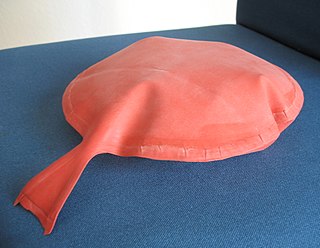 W
WA whoopee cushion is a practical joke device involving flatulence humor, which produces a noise resembling a "raspberry" or human flatulence.
 W
WThe Wonderbra is a type of push-up underwire brassiere that gained worldwide prominence in the 1990s. Although the Wonderbra name was first trademarked in the U.S. in 1955, the brand was developed in Canada. Moses (Moe) Nadler, founder and majority owner of the Canadian Lady Corset Company, licensed the trademark for the Canadian market in 1939. By the 1960s the Canadian Lady brand had become known in Canada as "Wonderbra, the company." In 1961 the company introduced the Model 1300 plunge push-up bra. This bra became one of the best-selling Canadian styles and is virtually identical to today's Wonderbra.